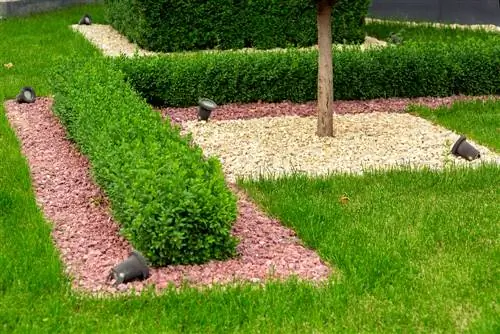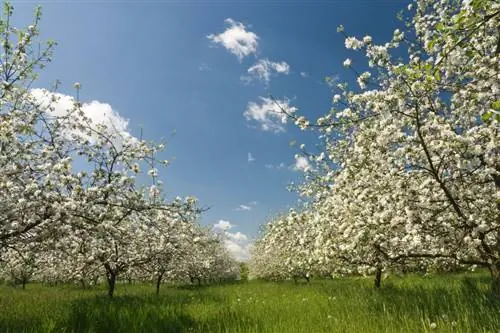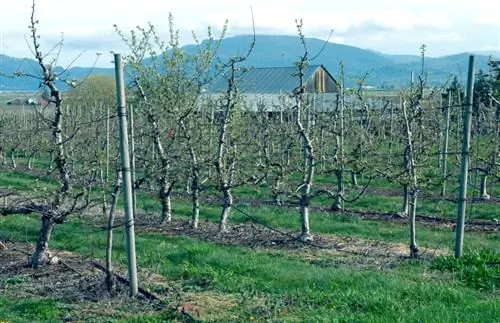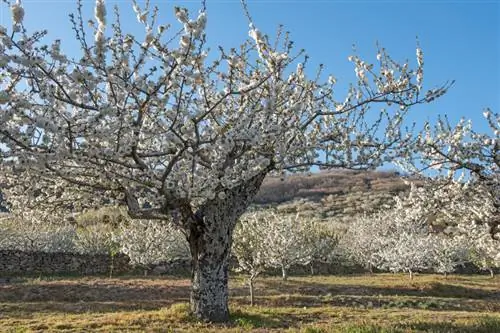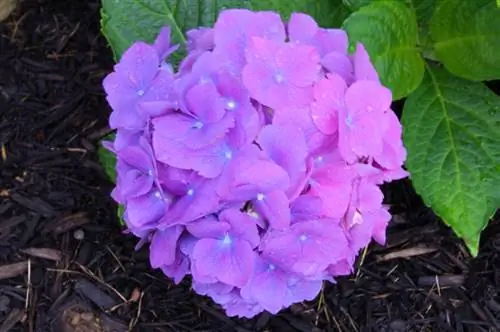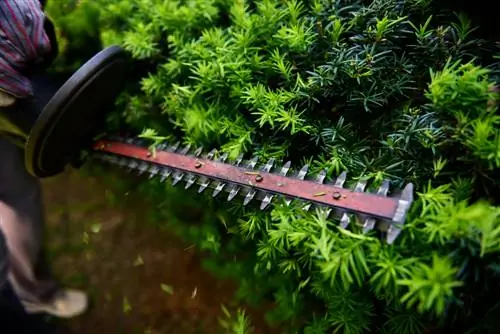- Author admin [email protected].
- Public 2023-12-16 16:46.
- Last modified 2025-01-23 11:22.
A mulch layer of plant material looks nice, warms the soil and ensures that hardly any weeds thrive. In this article you will find out how to properly mulch your hedge, which materials are suitable and how you should apply them.

Why and with what materials should you mulch a hedge?
Mulching a hedge serves to protect against drought, improve the garden soil and protect against weeds. Common mulching materials include bark mulch, hedge clippings, lawn clippings and leaves. The materials have different advantages, such as effective weed control, nitrogen formation or slow decomposition.
Why should hedges be mulched?
There are several reasons for this:
- Our summers are getting drier. This also affects the hedge plants. The mulch layer means less water evaporates from the soil and the plants survive dry periods better.
- Mulch improves the garden soil. In order for the substrate to remain vital in the long term, it must be regularly supplied with organic substances.
- The warm blanket saves you the extremely laborious task of weeding under the hedge.
What is mulch?
The term mulching comes from the late Middle High German word “molwic” and means something like chubby and soft. Mulch is the natural residue that is used to cover the ground under the hedge.
In the following table we have summarized the common materials as well as their advantages and disadvantages:
| Mulching material | Explanation | Advantages | Disadvantages |
|---|---|---|---|
| Bark mulch | Waste from forestry or sawmills | Medium-coarsely ground pine, Douglas fir or spruce bark suppresses weeds very effectively. The layer thickness should be at least ten centimeters. | There is no regulation or standard as to what bark mulch must be like. Therefore, pay attention to good quality when purchasing. Root weeds such as groundweed and couch grass grow quickly through the mulch layer and must be carefully removed before application. |
| hedge cutting | Pruning shredded with a garden shredder. | Accrues when trimming the hedge. | Decomposes slowly due to the lignin contained in the fresh wood. Therefore ideal as permanent mulch under hedges. It must not be applied too thickly, otherwise the air circulation in the soil will be prevented, which will lead to stunted growth. |
| Lawn cutting | Cuttings resulting from mowing | Accrues in large quantities during the summer months and can be easily utilized. Forms plenty of nitrogen. | If the cuttings are very moist, they will become very compact within a very short time. Rot often occurs beneath this layer, which can damage the plants. For a thicker layer, the material must therefore wither. Alternatively, just spread thinly and loosen up again and again. |
| Leaves | Accrues in large quantities in autumn. | You can simply leave leaves under the hedge as a layer of mulch in autumn. | The plants must be free of pests, fungal infestation or transmissible plant diseases. Because of the tannic acid it contains, mix with chopped remains of vegetable plants or grass clippings. |
Tip
If you mulch the hedge regularly, you should provide the trees with additional nutrients. Any mulching material will be broken down by soil organisms over time. The microorganisms use a lot of nitrogen in this process, which must be replaced by a long-term fertilizer, such as horn shavings (€32.00 on Amazon).

